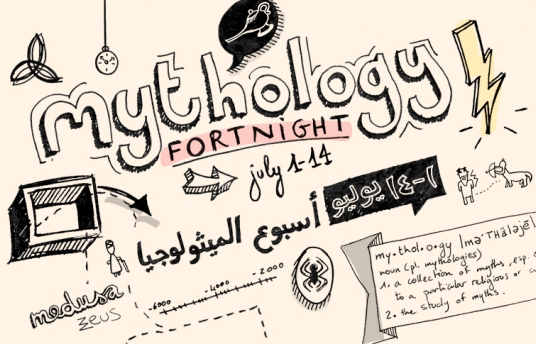Celebrate Mythology Fortnight with DFI
Jul 01, 2012

By Anealla Safdar, Digital Department, DFI
After shooting the first scenes for “The Amazing Spider-Man” in December 2010, Andrew Garfield compared comic books to Greek mythology.
Garfield is the actor who plays Peter Parker in the superhero film releasing in Doha on Thursday, July 5.
“I feel like comic books are our kind of mythology, our Greek mythology, like a modern kind of Greek mythology,” he said, nervously, in an interview with the BBC. “The themes that Stan Lee (Spider-Man co-creator and former Marvel president) was writing about in his comics are the same themes you’ll find in Shakespeare or in Aeschylus or in these (Greek tragedies). I feel like all the same human themes are in there. It’s just under a different guise.”
Some eighteen months later, his on and off-screen love interest Emma Stone (who plays Gwen Stacy) made similar comments.
“Comic books are our most recent mythology. When it comes to the ‘Cinderella’ story, it can be told…many times, because there’s always a different element to explore, and the same with Spider-Man,” she said, speaking to a newspaper.
The Amazing Spider-Man - Trailer
If the first half of 2012 is anything to go by, this is likely to be a banner year for films based on mythology (“Wrath of the Titans”, “Prometheus”, “The Avengers”, “The Amazing Spider-Man”, “The Dark Knight Rises”) and twenty-somethings Garfield and Stone are right – now is a good time to pay tribute to the origins of such entertainment.
What is a myth? Tweet us your 140-character definition, get in touch on Facebook or add your comment below!
Where did mythology come from, why and when? Quite simply; from ourselves, to answer impossible questions and since the beginning of time. Way before religion and science, about 300,000 years ago, Neanderthal graves contained weapons, tools and the bones of sacrificed animals, archaeologists have found.
“The Neanderthals who buried their companions with such care,” wrote British author Karen Armstrong in ‘A Short History of Myth’ “seem to have imagined that the visible material world was not the only reality.
From a very early date, therefore, it appears that human beings were distinguished by their ability to have ideas that went beyond their everyday experience.”
Ever since, Earth’s inhabitants through the ages have appeased their fears about the afterlife with myths and fabricated fantastical tales of what could not be understood.
“Long before science envisioned a big bang…long before there was a Bible or a Qu’ran, long before Darwin proposed natural selection, long before we could know the age of a rock and before men walked on the moon – there were myths,” wrote American historian Kenneth C Davis in his 2005 book. “Myths explained how earth was created, where life came from, why the stars shine at night and the seasons change. Myths were a very human way to explain everything.”
Over the next two weeks Doha Film Institute will celebrate mythology. We will honour stories from the past and more recent cinema adaptations. From the East to West, we will debunk many of the myths too-often, and usually purposefully, propagated (No, Aladdin was not an 18 year old man from Agrabah). We hope you enjoy the (magic carpet) ride.
As a starter, here are some mythological characters from six regions to get familiar with:
Africa
Mamlambo
Known as the ‘brain-sucker’, Mamlambo was a 67-feet long, evil creature in South African and Zulu myths. Once its prey died, the snake-like monster would siphon off the victim’s brains.
Americas
Pinga
Pinga was an inuit goddess of the hunt, fertility and medicine. She also conducted souls to the first stage of the afterlife, known as Adlivun, where they had to remain for one year before moving on.
Asia
Ba
Also known as Nuba, Ba was the bald, green-dress wearing Chinese goddess of drought who came from heaven. Wherever the deity appeared, there would be a drought.
Europe
Odin
Norse mythological hero, father of Thor and many other sons, Odin was the god of war, death, poetry and wisdom. His most famous power? To make the dead speak to question the wise. Santa Claus (another mythological figure) is said to be based on Odin.
Middle East
Ghoul
Cannibalistic, evil beings that feed on corpses and robs graves, ghouls were characters in ancient Arabian folklore. English novelist William Beckford featured a ghoul in his ‘The Arabian Nights’-inspired gothic novel ‘Vathek’, the first mention recorded in European literature.
Oceania
Rangi and Papa
In Maori (indigenous Polynesian people of New Zealand) mythology, Rangi the sky father and Papa, short for Papatuanuku, the earth mother were primordial parents locked in a tight embrace. They are the protagonists in a creation myth.